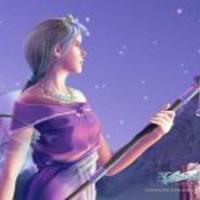Papers by Philippe Campeau

Human Mutation, Nov 9, 2012
Acrodysostosis is characterized by nasal hypoplasia, peripheral dysostosis, variable short statur... more Acrodysostosis is characterized by nasal hypoplasia, peripheral dysostosis, variable short stature, and intellectual impairment. Recently, mutations in PRKAR1A were reported in patients with acrodysostosis and hormone resistance. Subsequently, mutations in a phosphodiesterase gene (PDE4D) were identified in seven sporadic cases. We sequenced PDE4D in seven acrodysostosis patients from five families. Missense mutations were identified in all cases. Families showed de novo inheritance except one family with three affected children whose father was subsequently found to have subtle features of acrodysostosis. There were no recurrent mutations. Short stature and endocrine resistance are rare in this series; however, cognitive involvement and obesity were frequent. This last finding is relevant given PDE4D is insulin responsive and potentially involved in lipolysis. PDE4D encodes a cyclic AMP regulator and places PDE4D-related acrodysostosis within the same family of diseases as pseudohypoparathyroidism, pseudopseudohypoparathyroidism, PRKAR1A-related acrodysostosis and brachydactyly-mental retardation syndrome; all characterized by cognitive impairment and short distal extremities.
medRxiv (Cold Spring Harbor Laboratory), Nov 5, 2021
The American Journal of Human Genetics
The American Journal of Human Genetics
Monoallelic intragenic POU3F2 variants lead to neurodevelopmental delay and hyperphagic obesity, ... more Monoallelic intragenic POU3F2 variants lead to neurodevelopmental delay and hyperphagic obesity, confirming the gene&#39;s candidacy in 6q16.1 deletions

Journal of Medical Genetics
Rothmund-Thomson syndrome (RTS) is a rare, heterogeneous autosomal recessive genodermatosis, with... more Rothmund-Thomson syndrome (RTS) is a rare, heterogeneous autosomal recessive genodermatosis, with poikiloderma as its hallmark. It is classified into two types: type I, with biallelic variants inANAPC1and juvenile cataracts, and type II, with biallelic variants inRECQL4, increased cancer risk and no cataracts. We report on six Brazilian probands and two siblings of Swiss/Portuguese ancestry presenting with severe short stature, widespread poikiloderma and congenital ocular anomalies. Genomic and functional analysis revealed compound heterozygosis for a deep intronic splicing variant in trans with loss of function variants inDNA2, with reduction of the protein levels and impaired DNA double-strand break repair. The intronic variant is shared by all patients, as well as the Portuguese father of the European siblings, indicating a probable founder effect. Biallelic variants inDNA2were previously associated with microcephalic osteodysplastic primordial dwarfism. Although the individuals...

ABSTRACTPURPOSECoffin-Siris and Nicolaides-Baraitser syndromes, are recognisable neurodevelopment... more ABSTRACTPURPOSECoffin-Siris and Nicolaides-Baraitser syndromes, are recognisable neurodevelopmental disorders caused by germline variants in BAF complex subunits. TheSMARCC2BAFopathy was recently reported. Herein, we present clinical and molecular data on a large cohort.METHODSClinical symptoms for 41 novel and 24 previously published cases were analyzed using the Human Phenotype Ontology. For genotype-phenotype correlation, molecular data were standardized and grouped into non-truncating and likely gene-disrupting variants (LGD). Missense variant protein expression and BAF subunit interactions were examined using 3D protein modeling, co-immunoprecipitation, and proximity-ligation assays.RESULTSNeurodevelopmental delay with intellectual disability, muscular hypotonia and behavioral disorders were the major manifestations. Clinical hallmarks of BAFopathies were rare. Clinical presentation differed significantly, with LGD variants being predominantly inherited and associated with mild...

Molecular Psychiatry
Missense and truncating variants in the X-chromosome-linked CLCN4 gene, resulting in reduced or c... more Missense and truncating variants in the X-chromosome-linked CLCN4 gene, resulting in reduced or complete loss-of-function (LOF) of the encoded chloride/proton exchanger ClC-4, were recently demonstrated to cause a neurocognitive phenotype in both males and females. Through international clinical matchmaking and interrogation of public variant databases we assembled a database of 90 rare CLCN4 missense variants in 90 families: 41 unique and 18 recurrent variants in 49 families. For 43 families, including 22 males and 33 females, we collated detailed clinical and segregation data. To confirm causality of variants and to obtain insight into disease mechanisms, we investigated the effect on electrophysiological properties of 59 of the variants in Xenopus oocytes using extended voltage and pH ranges. Detailed analyses revealed new pathophysiological mechanisms: 25% (15/59) of variants demonstrated LOF, characterized by a “shift” of the voltage-dependent activation to more positive voltag...

Human Genetics and Genomics Advances
WDR5 is a broadly studied, highly conserved key protein involved in a wide array of biological fu... more WDR5 is a broadly studied, highly conserved key protein involved in a wide array of biological functions. Among these functions, WDR5 is a part of several protein complexes that affect gene regulation via post-translational modification of histones. We collected data from 11 unrelated individuals with six different rare de novo germline missense variants in WDR5; one identical variant was found in five individuals and another variant in two individuals. All individuals had neurodevelopmental disorders including speech/language delays (n ¼ 11), intellectual disability (n ¼ 9), epilepsy (n ¼ 7), and autism spectrum disorder (n ¼ 4). Additional phenotypic features included abnormal growth parameters (n ¼ 7), heart anomalies (n ¼ 2), and hearing loss (n ¼ 2). Three-dimensional protein structures indicate that all the residues affected by these variants are located at the surface of one side of the WDR5 protein. It is predicted that five out of the six amino acid substitutions disrupt interactions of WDR5 with RbBP5 and/or KMT2A/C, as part of the COMPASS (complex proteins associated with Set1) family complexes. Our experimental approaches in Drosophila melanogaster and human cell lines show normal protein expression, localization, and protein-protein interactions for all tested variants. These results, together with the clustering of variants in a specific region of WDR5 and the absence of truncating variants so far, suggest that dominant-negative or gain-of-function mechanisms might be at play. All in all, we define a neurodevelopmental disorder associated with missense variants in WDR5 and a broad range of features. This finding highlights the important role of genes encoding COMPASS family proteins in neurodevelopmental disorders.
Case Reports in Ophthalmology
Colobomas of the globe and microphthalmia are congenital conditions that can strongly affect visi... more Colobomas of the globe and microphthalmia are congenital conditions that can strongly affect vision. Etiologies are varied and include embryonic and hereditary origins. We report what is, to the best of our knowledge, the first case of a SIX6 gene pathogenic variant associated with a phenotype of both bilateral microphthalmia and extensive colobomas of the globes. A 3-week-old boy presented with bilateral microphthalmia and iris, optic nerve, and chorioretinal colobomas. Genetic analysis was performed on a panel of 78 genes (microphthalmia, anophthalmia, and coloboma panel), and a homozygous likely pathogenic variant was identified in the SIX6 gene, resulting in the loss of the initiator methionine. Thus, our report expands the phenotypic spectrum of SIX6-related disorders.

Trials
Background Mucopolysaccharidoses (MPS) are a group of inherited metabolic diseases characterized ... more Background Mucopolysaccharidoses (MPS) are a group of inherited metabolic diseases characterized by chronic, progressive multi-system manifestations with varying degrees of severity. Disease-modifying therapies exist to treat some types of MPS; however, they are not curative, underscoring the need to identify and evaluate co-interventions that optimize functioning, participation in preferred activities, and quality of life. A Canadian pediatric MPS registry is under development and may serve as a platform to launch randomized controlled trials to evaluate such interventions. To promote the standardized collection of patient/family-reported and clinical outcomes considered important to patients/families, health care providers (HCPs), and policymakers, the choice of outcomes to include in the registry will be informed by a core outcome set (COS). We aim to establish a patient-oriented COS for pediatric MPS using a multi-stakeholder approach. Methods In step 1 of the six-step process t...
Trials, 2021
The original article has been corrected.

Human Genetics and Genomics Advances, 2021
Summary Overlapping clinical phenotypes and an expanding breadth and complexity of genomic associ... more Summary Overlapping clinical phenotypes and an expanding breadth and complexity of genomic associations are a growing challenge in the diagnosis and clinical management of Mendelian disorders. The functional consequences and clinical impacts of genomic variation may involve unique, disorder-specific, genomic DNA methylation episignatures. In this study, we describe 19 novel episignature disorders and compare the findings alongside 38 previously established episignatures for a total of 57 episignatures associated with 65 genetic syndromes. We demonstrate increasing resolution and specificity ranging from protein complex, gene, sub-gene, protein domain, and even single nucleotide-level Mendelian episignatures. We show the power of multiclass modeling to develop highly accurate and disease-specific diagnostic classifiers. This study significantly expands the number and spectrum of disorders with detectable DNA methylation episignatures, improves the clinical diagnostic capabilities through the resolution of unsolved cases and the reclassification of variants of unknown clinical significance, and provides further insight into the molecular etiology of Mendelian conditions.

The American Journal of Human Genetics, 2021
Proteins involved in transcriptional regulation harbor a demonstrated enrichment of mutations in ... more Proteins involved in transcriptional regulation harbor a demonstrated enrichment of mutations in neurodevelopmental disorders. The Sin3 (Swi-independent 3)/histone deacetylase (HDAC) complex plays a central role in histone deacetylation and transcriptional repression. Among the two vertebrate paralogs encoding the Sin3 complex, SIN3A variants cause syndromic intellectual disability, but the clinical consequences of SIN3B haploinsufficiency in humans are uncharacterized. Here, we describe a syndrome hallmarked by intellectual disability, developmental delay, and dysmorphic facial features with variably penetrant autism spectrum disorder, congenital malformations, corpus callosum defects, and impaired growth caused by disruptive SIN3B variants. Using chromosomal microarray or exome sequencing, and through international data sharing efforts, we identified nine individuals with heterozygous SIN3B deletion or single-nucleotide variants. Five individuals harbor heterozygous deletions encompassing SIN3B that reside within a ∼230 kb minimal region of overlap on 19p13.11, two individuals have a rare nonsynonymous substitution, and two individuals have a single-nucleotide deletion that results in a frameshift and predicted premature termination codon. To test the relevance of SIN3B impairment to measurable aspects of the human phenotype, we disrupted the orthologous zebrafish locus by genome editing and transient suppression. The mutant and morphant larvae display altered craniofacial patterning, commissural axon defects, and reduced body length supportive of an essential role for Sin3 function in growth and patterning of anterior structures. To investigate further the molecular consequences of SIN3B variants, we quantified genome-wide enhancer and promoter activity states by using H3K27ac ChIP-seq. We show that, similar to SIN3A mutations, SIN3B disruption causes hyperacetylation of a subset of enhancers and promoters in peripheral blood mononuclear cells. Together, these data demonstrate that SIN3B haploinsufficiency leads to a hitherto unknown intellectual disability/autism syndrome, uncover a crucial role of SIN3B in the central nervous system, and define the epigenetic landscape associated with Sin3 complex impairment.

Nucleic Acids Research, 2021
Vertebrate genomes contain major (>99.5%) and minor (<0.5%) introns that are spliced by the... more Vertebrate genomes contain major (>99.5%) and minor (<0.5%) introns that are spliced by the major and minor spliceosomes, respectively. Major intron splicing follows the exon-definition model, whereby major spliceosome components first assemble across exons. However, since most genes with minor introns predominately consist of major introns, formation of exon-definition complexes in these genes would require interaction between the major and minor spliceosomes. Here, we report that minor spliceosome protein U11-59K binds to the major spliceosome U2AF complex, thereby supporting a model in which the minor spliceosome interacts with the major spliceosome across an exon to regulate the splicing of minor introns. Inhibition of minor spliceosome snRNAs and U11-59K disrupted exon-bridging interactions, leading to exon skipping by the major spliceosome. The resulting aberrant isoforms contained a premature stop codon, yet were not subjected to nonsense-mediated decay, but rather boun...

SummaryInterpretation of next-generation sequencing data of individuals with an apparent sporadic... more SummaryInterpretation of next-generation sequencing data of individuals with an apparent sporadic neurodevelopmental disorder (NDD) often focusses on pathogenic variants in genes associated with NDD, assuming full clinical penetrance with limited variable expressivity. Consequently, inherited variants in genes associated with dominant disorders may be overlooked when the transmitting parent is clinically unaffected. While de novo variants explain a substantial proportion of cases with NDDs, a significant number remains undiagnosed possibly explained by coding variants associated with reduced penetrance and variable expressivity. We characterized twenty families with inherited heterozygous missense or protein-truncating variants (PTVs) in CHD3, a gene in which de novo variants cause Snijders Blok-Campeau syndrome, characterized by intellectual disability, speech delay and recognizable facial features (SNIBCPS). Notably, the majority of the inherited CHD3 variants were maternally tran...

Genetics in Medicine, 2021
PURPOSE Phosphatidylinositol Glycan Anchor Biosynthesis, class G (PIGG) is an ethanolamine phosph... more PURPOSE Phosphatidylinositol Glycan Anchor Biosynthesis, class G (PIGG) is an ethanolamine phosphate transferase catalyzing the modification of glycosylphosphatidylinositol (GPI). GPI serves as an anchor on the cell membrane for surface proteins called GPI-anchored proteins (GPI-APs). Pathogenic variants in genes involved in the biosynthesis of GPI cause inherited GPI deficiency (IGD), which still needs to be further characterized. METHODS We describe 22 individuals from 19 unrelated families with biallelic variants in PIGG. We analyzed GPI-AP surface levels on granulocytes and fibroblasts for three and two individuals, respectively. We demonstrated enzymatic activity defects for PIGG variants in vitro in a PIGG/PIGO double knockout system. RESULTS Phenotypic analysis of reported individuals reveals shared PIGG deficiency-associated features. All tested GPI-APs were unchanged on granulocytes whereas CD73 level in fibroblasts was decreased. In addition to classic IGD symptoms such as hypotonia, intellectual disability/developmental delay (ID/DD), and seizures, individuals with PIGG variants of null or severely decreased activity showed cerebellar atrophy, various neurological manifestations, and mitochondrial dysfunction, a feature increasingly recognized in IGDs. Individuals with mildly decreased activity showed autism spectrum disorder. CONCLUSION This in vitro system is a useful method to validate the pathogenicity of variants in PIGG and to study PIGG physiological functions.

PurposeHeterozygous variants in BCL11A underlie an intellectual developmental disorder with persi... more PurposeHeterozygous variants in BCL11A underlie an intellectual developmental disorder with persistence of fetal hemoglobin (BCL11A-IDD, a.k.a. Dias-Logan syndrome). We sought to delineate the genotypic and phenotypic spectrum of BCL11A-IDD.MethodsWe performed an in-depth analysis of 42 patients with BCL11A-IDD ascertained through a collaborative network of clinical and research colleagues. We also reviewed 33 additional affected individuals previously reported in the literature or available through public repositories with clinical information.ResultsMolecular and clinical data analysis of 75 patients with BCL11A-IDD identified 60 unique variants (30 frameshift, 7 missense, 6 splice-site, 17 stop-gain) and 8 unique CNVs (microdeletions involving BCL11A only). We redefined the most frequent manifestations of the condition: intellectual disability, hypotonia, behavioral abnormalities, postnatal microcephaly and autism spectrum disorder. Two thirds of patients have brain MRI abnormali...
Human Genetics, 2021
DOORS syndrome is characterized by deafness, onychodystrophy, osteodystrophy, intellectual disabi... more DOORS syndrome is characterized by deafness, onychodystrophy, osteodystrophy, intellectual disability, and seizures. In this study, we report two unrelated families with two individuals with DOORS syndrome without deafness. Exome sequencing revealed a homozygous missense variant in PIGF (NM_173074.3:c.515C>G, p.Pro172Arg) in both. We demonstrate impaired glycosylphosphatidylinositol (GPI) biosynthesis through flow cytometry analysis. We thus describe the causal role of a novel disease gene, PIGF, in DOORS syndrome and highlight the overlap between this condition and GPI deficiency disorders. For each gene implicated in DOORS syndrome and/or inherited GPI deficiencies, there is considerable clinical variability so a high index of suspicion is warranted even though not all features are noted.

Epilepsia, 2021
The phosphatidylinositol glycan anchor biosynthesis class S protein (PIGS) gene has recently been... more The phosphatidylinositol glycan anchor biosynthesis class S protein (PIGS) gene has recently been implicated in a novel congenital disorder of glycosylation resulting in autosomal recessive inherited glycosylphosphatidylinositol‐anchored protein (GPI‐AP) deficiency. Previous studies described seven patients with biallelic variants in the PIGS gene, of whom two presented with fetal akinesia and five with global developmental delay and epileptic developmental encephalopathy. We present the molecular and clinical characteristics of six additional individuals from five families with unreported variants in PIGS. All individuals presented with hypotonia, severe global developmental delay, microcephaly, intractable early infantile epilepsy, and structural brain abnormalities. Additional findings include vision impairment, hearing loss, renal malformation, and hypotonic facial appearances with minor dysmorphic features but without a distinctive facial gestalt. Four individuals died due to n...











Uploads
Papers by Philippe Campeau